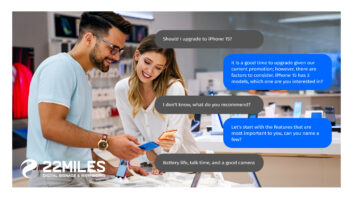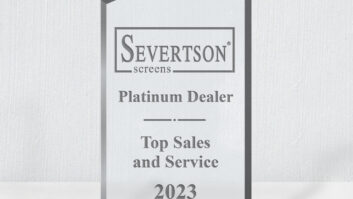Westlake Village, Calif. — U.S. consumers are keeping their cellular handsets longer, getting free phones more often, and opting more often for clamshell models, according to the semiannual J.D. Power and Associates Wireless Mobile Phone Evaluation Study.
The study also determined that overall customer satisfaction with cellphones fell significantly compared to the late-2006 survey.
In the latest study, Motorola and Sanyo were in a first-place tie in overall customer satisfaction; followed by Samsung and LG, both with satisfaction levels above the industry average. Brands scoring below the industry average were SonyEricsson, Nokia, UTStarcom, and Kyocera, in order of highest to lowest ranking.
The study is based on experiences reported by 21,520 wireless users who owned their current mobile phone for less than two years. The users were surveyed in two waves in September-October 2006 and January-February 2007. The surveys for the previous report were conducted in March-April 2006 and June-July 2006.
In the customer satisfaction portion of the surveys J.D. Power looked at five key factors and weighted them with the following levels of importance: physical design (24 percent), operation (22 percent), features (20 percent), handset durability (19 percent), and battery function (15 percent). Each brand’s scores were based on a 1,000-point scale.
With the latest survey, industry wide customer satisfaction fell “significantly” to 718 from 726 in last year’s second survey, said Rich Ellrodt, telecom and technology research director. Satisfaction levels, nonetheless, remained above the year-ago survey’s 711 points, he said.
Among individual brands in the latest survey, Motorola and Sanyo each scored 726 points, exceeding the industry-average 718. “Motorola performs particularly well in the physical design, operation and features factors, while Sanyo receives high ratings in operation and battery functionality,” the company said.
Samsung and LG followed with 722 and 721 points, respectively. Coming in below the industry average were SonyEricsson with 710 points, Nokia with 705, UTStarcom with 694, and Kyocera with 685.
The latest rankings show that SonyEricsson’s rank fell considerably from J.D. Powers’ second 2006 semiannual survey, which ranked SonyEricsson number one in customer satisfaction, followed by LG, Sanyo and Motorola, in that order. Sony Ericsson received the highest ratings from customers in handset durability, and the brand also performed particularly well in features and battery functionality, J.D. Power said at the time.
With the latest survey, Sanyo has ranked first in five of the past six years, having hit the top in the then-annual 2002 and 2004 surveys, tying for first in the annual 2005 survey, hitting number one in one of two 2006 semiannual surveys, and tying for first in the first of the 2007 surveys.
Here’s what else J.D. Power uncovered:
Length of Ownership: The average length of handset ownership increased 5 percent since fall 2006. Consumers are keeping their handsets for an average of 17.5 months, up from 16.6 months in the second 2006 survey. The change marked the first increase in length of ownership since 2002, when the average was 18.4 months. The increase in ownership duration was roughly equal across major handset brands, the company said.
One possible reason for the increase is carriers’ increasing focus on promoting two-year contracts rather than a one-year contract, “which was customary a few years ago,” said Kirk Parsons, J.D. Powers’s senior director of wireless services. Subscribers “tend to hold on to their current cell phones longer to avoid termination fees when switching service,” he explained.
Price: The price paid for a wireless phone dropped from an average $103 in 2002 to $93 in the latest survey. The number of free phones purchased has also grown. In the latest survey, 36 percent of users reported receiving a free mobile phone when they subscribed to a wireless service—up considerably from 28 percent in the 2002 study.
“It’s clear that wireless service carriers are using mobile phones as bait to increase consumer traffic, applying discounts either through rebates or free limited-time offers,” said Parsons. “The problem with this strategy is that, in most cases, the discounted handsets being offered are older models, which typically lack the latest technological advancements or desired design features.”
Handset Type, Usage: The study also uncovered other handset buying and usage patterns.
Sixty-nine percent of all cell phones purchased in the past two years, for example, were clamshell-style models, up from 50 percent in the second-half 2006 survey. In contrast, only 29 percent of the surveyed users purchased a candy-bar phone, and only 2 percent had a slider.
The most-used handset features by subscribers included: speakerphone (51 percent); camera (35 percent), short message service (22 percent); and gaming (16 percent).
More than one-half of all current wireless users compared other handset brands before selecting their current wireless phone, the company said. Customers who compared phones during the selection process were more likely to be satisfied overall with their current handset, the company noted.













